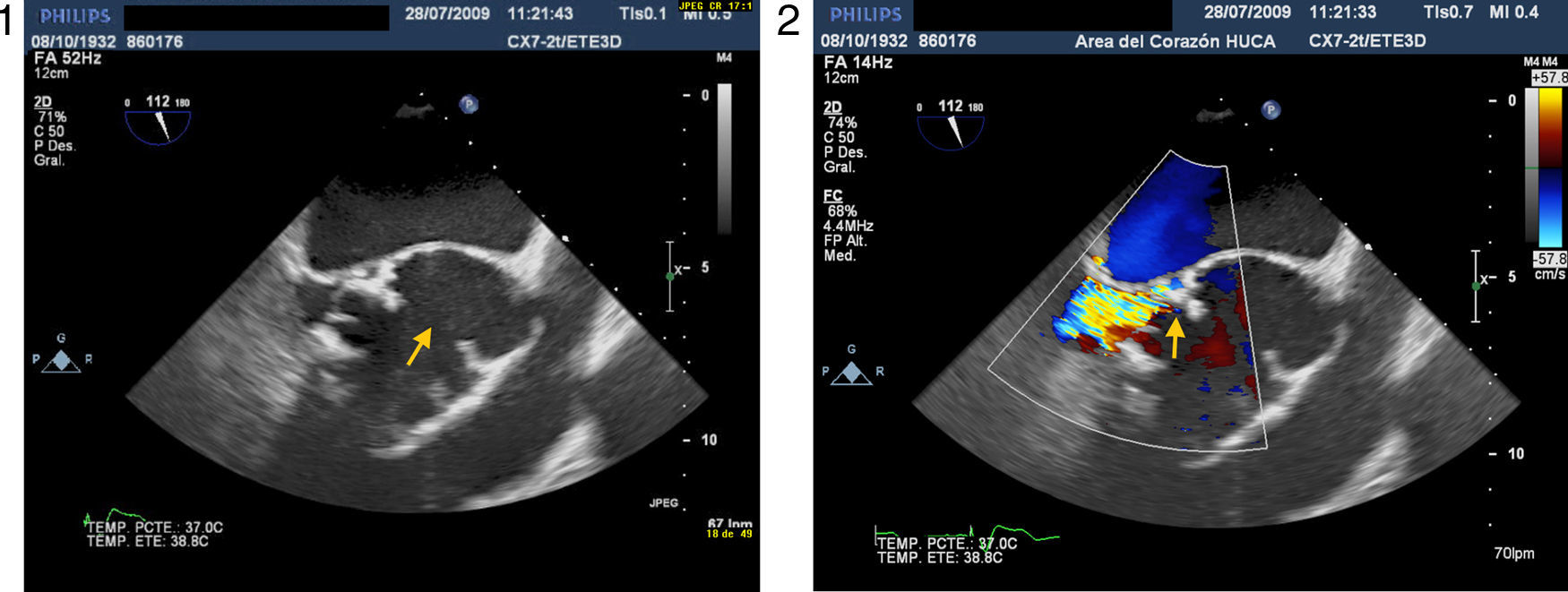Valsalva sinus pseudoaneurysms are uncommon. The main causes for the formation of pseudoaneurysms are endocarditis, previous enlargement of the aortic root, aortic regurgitation and the use of a composite graft. We report the case of a 79-year-old man with an aortic bioprosthesis implanted five years ago to treat severe aortic regurgitation (AR) with a normal aortic root. A new diastolic murmur was heard in the last clinical review, so the patient was referred for transthoracic echocardiography, which demonstrated severe AR and a dilated aortic root. Transesophageal echocardiography (Figures 1 and 2) confirmed severe AR with an aneurysmal dilatation of the non-coronary sinus, with no signs of infection. Computed tomography (CT) confirmed severe dilatation of the aortic root (Figure 3, arrows). During surgery, a transverse fissure was detected in the intima of the non-coronary sinus. The valve was replaced with a 27-mm valve and the aortic root was remodeled using a 30-mm vascular graft.
Aortic pseudoaneurysms constitute a serious complication. They usually occur in the proximity of aortic cannulation, aortotomy or anastomosis. They are also associated with infections, genetic diseases and traumatisms. The clinical presentation is often insidious and may range from asymptomatic to febrile illness, given their frequent association with endocarditis. They may also manifest as chest pain or with symptoms arising from rupture. As regards diagnosis, CT associated with echocardiography is the best diagnostic tool. Surgery is the treatment of choice for these patients.
Ethical disclosuresProtection of human and animal subjectsThe authors declare that no experiments were performed on humans or animals for this investigation.
Confidentiality of DataThe authors declare that they have followed the protocols of their work center on the publication of patient data and that all the patients included in the study have received sufficient information and have given their informed consent in writing to participate in the study.
Right to privacy and informed consentThe authors declare that no patient data appears in this article.
Conflicts of interestThe authors have no conflicts of interest to declare.







